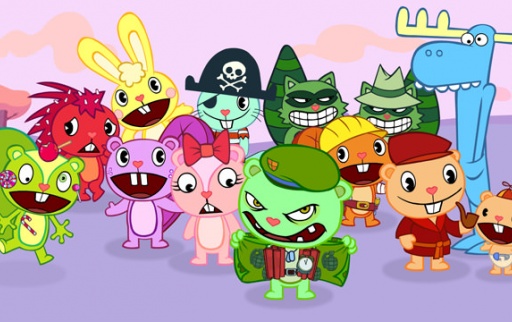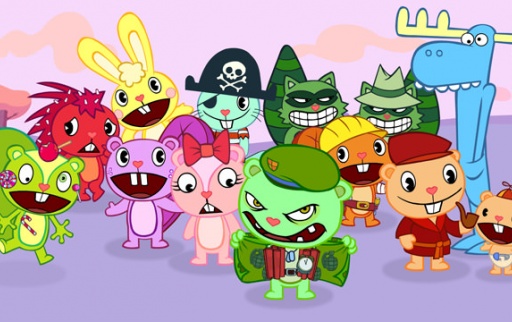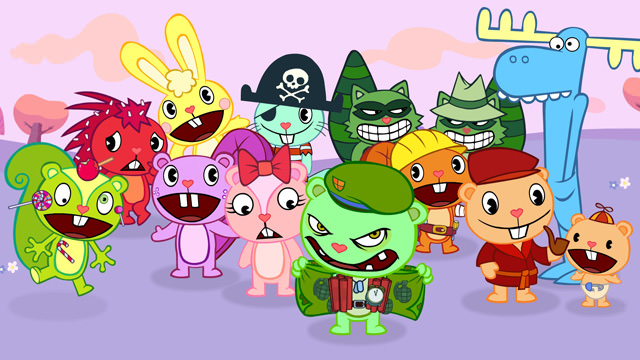

In this final installment of our behind-the-scenes look at the "Wrath Of Con" episode, we'll dive into the last two steps: animation and sound FX/music. If you haven't read the previous blog entries, I'll hook you up for the first one here and the second entry here. That's just how I roll, yo!
Step 5 - Animation
This is probably what you guys are most interested in, but ironically, it's the hardest stage to talk and show you guys anything about since a lot of the fruits of the labor is already in the episode. I could talk about the principles of animation, but blog entries aren't the most conducive environment to do this in. If you're serious about learning and really getting your feet wet in the amazing world of animation I highly recommend taking classes at a college/university. I'm hearing art and animation programs popping up in High School these days too, so there's really no excuse!
If you're not sure if animation is the thing for you or you're just one of those book-learning types, there are two books that I consider MUST reads:
Frank Thomas and Ollie Johnston's "The Illusion Of Life"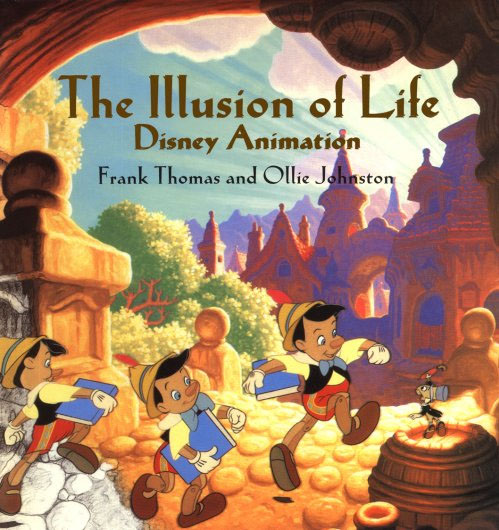
Considered by many as the bible of animation, written by two of the masters of the genre! This giant book is not only good for knocking people out or as a step to reach high places, it's also packed with history about animation and various techniques that Disney animators invented that every animator uses to this day! These guys really were the pioneers of character animation so, absorb it directly from the source!
The second book is Richard William's "The Animator's Survival Kit"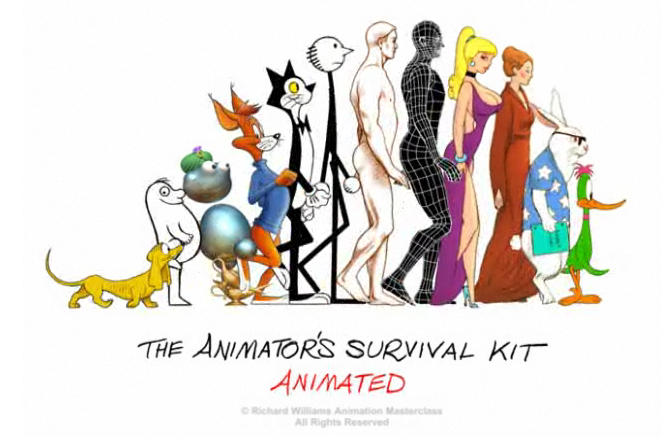
This is pretty much a handbook on how to do everything in animation! I went to four years through the animation program at San Francisco State University and got a pretty good handle on animation. A few years later, I was fortunate enough to attend one of Richard William's seminars and it completely blew my mind! I compare it to the moment when Neo sees the Matrix for the first time. Just an incredible resource that is practical and chock full of information.
Ok, enough product plugs. Let's dive into some HTF animation, shall we?
As I've mentioned in the past, we use Adobe Flash to do the art and animation for the show. Flash lets us do animation really rapidly as compared to traditional hand-drawn animation. I would LOVE to do HTF in a more traditional style; that is hand crafted frame-by-frame like feature animated films. That is my background and training, after all as a 2D animator BUT it all comes down to budget and schedule (there's those two devilish words again!). It would probably take us ten times longer (maybe, even more) to do this show if we did it traditionally and the cost would just go through the roof!
Luckily, the training that one gets as a character animator translates to a wide variety of mediums, be it 3D (like Pixar movies), 2D (traditional Disney movies) or stop-motion animation (like The Nightmare Before Xmas). All animators use the same basic principles to breath life to what are really in-animate objects, we all just use different tools.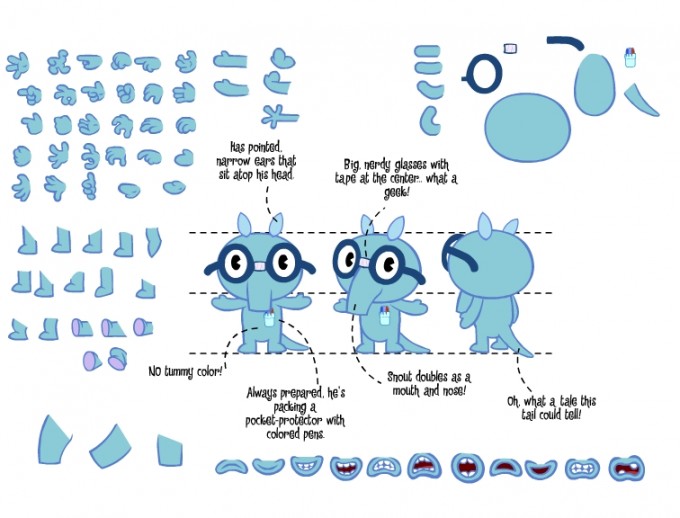
Above is an example of a Character Sheet (a.k.a Model Sheet or Style Guide) that we use in the show. Different shows have slightly different ways of presenting character sheets. At the most basic, it should provide animators and artists different views of the character so the character remains consistent despite the varied and numerous animators and artists that work on the show.
Since we use Flash, you'll see all the basic body parts that make up our characters along the sides. I also like to add little fun notes for the animators to help them keep the character on-model and any other information that may be helpful. This is not all the parts we'll ever use for a character but rather a starting point. Many more parts will be made (especially bloody ones) during production but this is the beginning of the process.
Why all the body parts, you might ask? Well, the way we animate in Flash is sort of akin to animating cut-out pieces of paper. This way, we're not drawing every frame but rather moving body parts around and swapping them out for different parts to get the desired animation effect. We lovingly refer to it as 2.5 or 2 1/2D since it's not really 2D hand-drawn animation and neither is it manipulating objects in a 3D space but rather, an odd hybrid of both. It sort of affords us the best features of both worlds and makes producing the show on a semi-consistent basis a reality.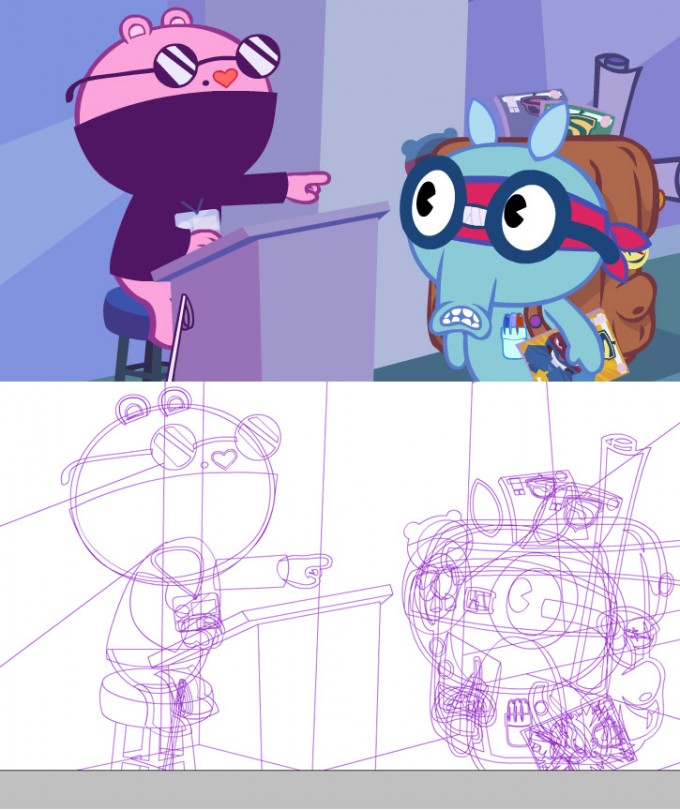
I just wanted to show you guys this comparison shot so you can see what I mean about "cut-out"
animation. You'll see in the wire frame render (reminds me of baggage x-ray at the airport for some reason) the clear definition of the body parts and various objects and how they all work together in a shot.
There are two different styles of animation; 1) Pose-to-pose and 2) Straight Ahead. We use both these techniques to animate.
Pose-to-pose means that the animator will pose out each keyframe first then animate the "in-betweens" after. Visual aid: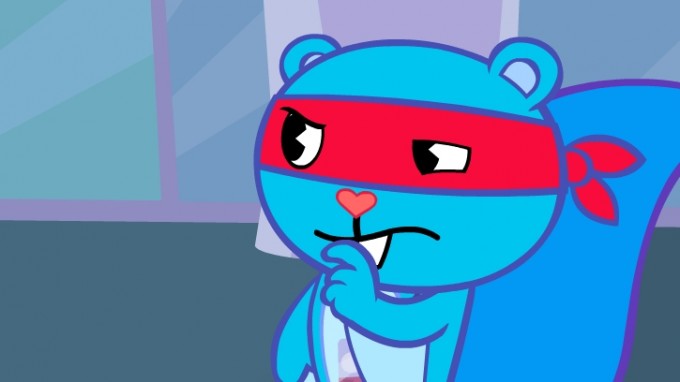
Here's our first pose of Splendid. He's thinking about what to do.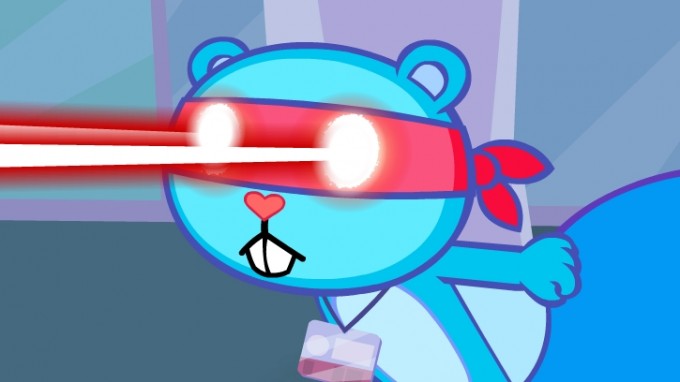
In the story boards his next action will be to fire up his heat-vision and make Giggles' light saber piping hot. So, doing this action pose-to-pose means that I would first pose or draw the character in the first keyframe pose (image 1) then do the second pose (image 2). After I'm satisfied with that, I would then go in an add all the in-between poses to make it look like the character is moving.
Actually, in this case, I added what's called an "Anticipation" or "Antic" in-between those two poses: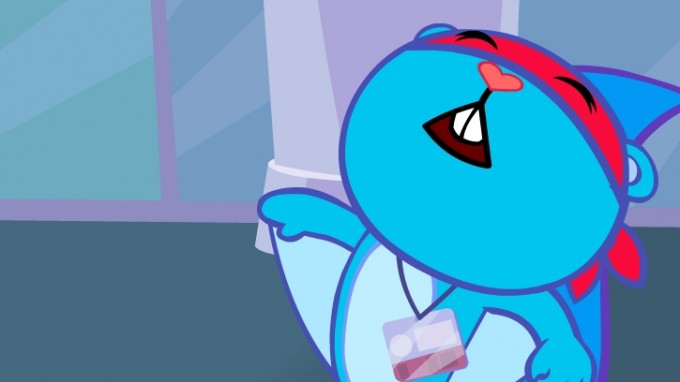
An "Antic" is a pose that's usually the opposite of the end action. A wind up before a pitch or that moment you coil down before you do a big jump are both examples of this. In the same token, I wanted Splendid to feel like he was "throwing" his heat-vision forward so I made him antic back before he whips his head forward to unleash his laser beams.
The second technique we use is called "straight ahead" animation. As the name suggests, animation is done straight ahead, one frame at a time. Essentially, you're doing the in-betweens as you go. We do straight-aheads mostly for secondary animation like a scarf on a character or rope and even fire.
So, this is how we make the characters move, one frame at a time! As you might imagine, it's quite tedious and very detail oriented type of work. For the most part it's a bit thankless as your work literally whizzez by the audience, 30 frames per second. But such is the nature of this medium and frankly, we wouldn't want it any other way!
Step 6 - Sound FX and Music
Once animation is done, or the timing is locked, we pass it over to our audible friends Jim Lively and Jerome Rossen for the last 50% of the production - sound! This last step is such a big deal that I fear I may be doing it a disservice simply lumping it together in one step. If you don't believe me try watching a movie or show sometime with the sound completely off and you'll see what I mean.
For sound FX, Jim and I both hold to the same design principle for the show and that is try to make the sound FX as real as visceral as possible. I'm talking generally, of course. We've used our fair share of "cartoon" sounds but as a guiding principle we like contrasting the really crazy, cartoony look of the show with real sounds and sound effects. Many times, Jim will record foley of a raw chicken carcass being pulled apart or plates and glasses being thrown on a floor to footsteps in sand and all sorts of hits, bangs, clatters, and any imaginable (or unimaginable) sound you can think off.
We have a lot of fun in the sound FX sessions because more often than not, we'll try to come up with some crazy sound FX for some of the most whacked out action. What sound does an intestine going through a trombone sound like? How about teeth rattling in your skull? Should there be a squeak when an eye ball streaks across a pane of glass? This is probably one of the more unique design challenges for a show like Happy Tree Friends where these things are just part of the show! Sometimes, the sound you think an object should make doesn't quite work and we have to come up with a combination of some other whacky stuff just to get it just right.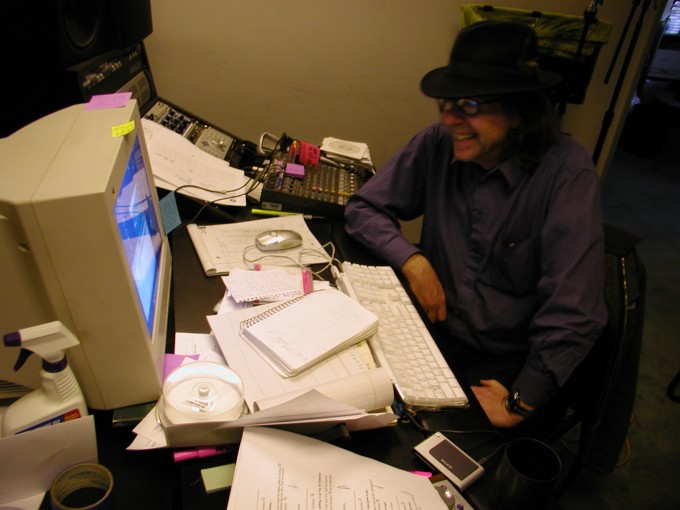
One of the best things with working with Jim is the man himself! He just thinks sound! I've met people, like myself, who are visual thinkers. I've met engineers who think in flow-charts. But sound guys, they're really a breed unto their own. It's hard to describe it but Jim really does see perceive the world through sound... sorta like Daredevil! He will hear things that nobody else can hear or know just the right combination of sound FX that I would have never thought off to make the exact sound we're looking for.
As for the music, I'll let Jerome tell you himself about his process in his own blog here! The only thing I will say about the music is that we try to make it the "emotional voice" of the characters. If you watch carefully, many times the music will describe what the character on screen is feeling. If they are calm, the music is soothing and relaxing. When they get tense the tempo goes up and it become frantic. When they are surprised it's punctuated by music hits. Since the characters don't really speak in any discernable language, we use the music to reinforce the emotional performance.
Jerome himself seems to be a bottomless pit of music. I've tried to stump this man so many times with bizzare and off the wall sound Direction like, "can we make the music sound tired," or "I'd like to try make the music sound empty." I know, those words don't even make sense to me yet somehow Jerome delivers with resounding success! If Jim thinks in sound FX, Jerome definitely lives in a world of music! (Mental note, I must eat his brain and consume his powers!)
I have to say, this part of the process is where I usually breathe a sigh of relief. Even though I'm still involved as a Director in this last step, I've worked with Jim and Jerome long enough that they can read my mind! AH! Get out of my thoughts!!! They know exactly what I'll be looking for or can understand me when I say, "we'll need a 'gleep' here after the 'ker-plunk'."
Final Step - Enjoy!
So, last (and certainly not the least) step involves you (yes, you reading this!) to sit back, relax and enjoy the show! Yes, this process isn't complete until it reaches your eyes, travels through your optical nerves and is processed in your brain which in turn sends a signal to tickle your funny bone! It's the interactive portion of the show and if we all did our jobs right it should be the easiest and most enjoyable part of this whole process.
Well, that's a wrap! Thanks everyone for reading and watching the shows! Right now, I'm about overdue for my smoothie so, I'm off to my sugary bliss! See you guys later!



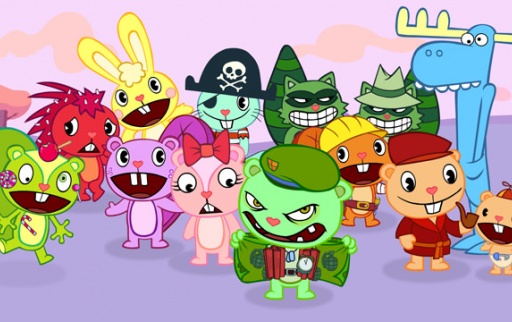
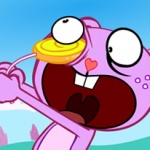 Happy Tree Friends
Happy Tree Friends 